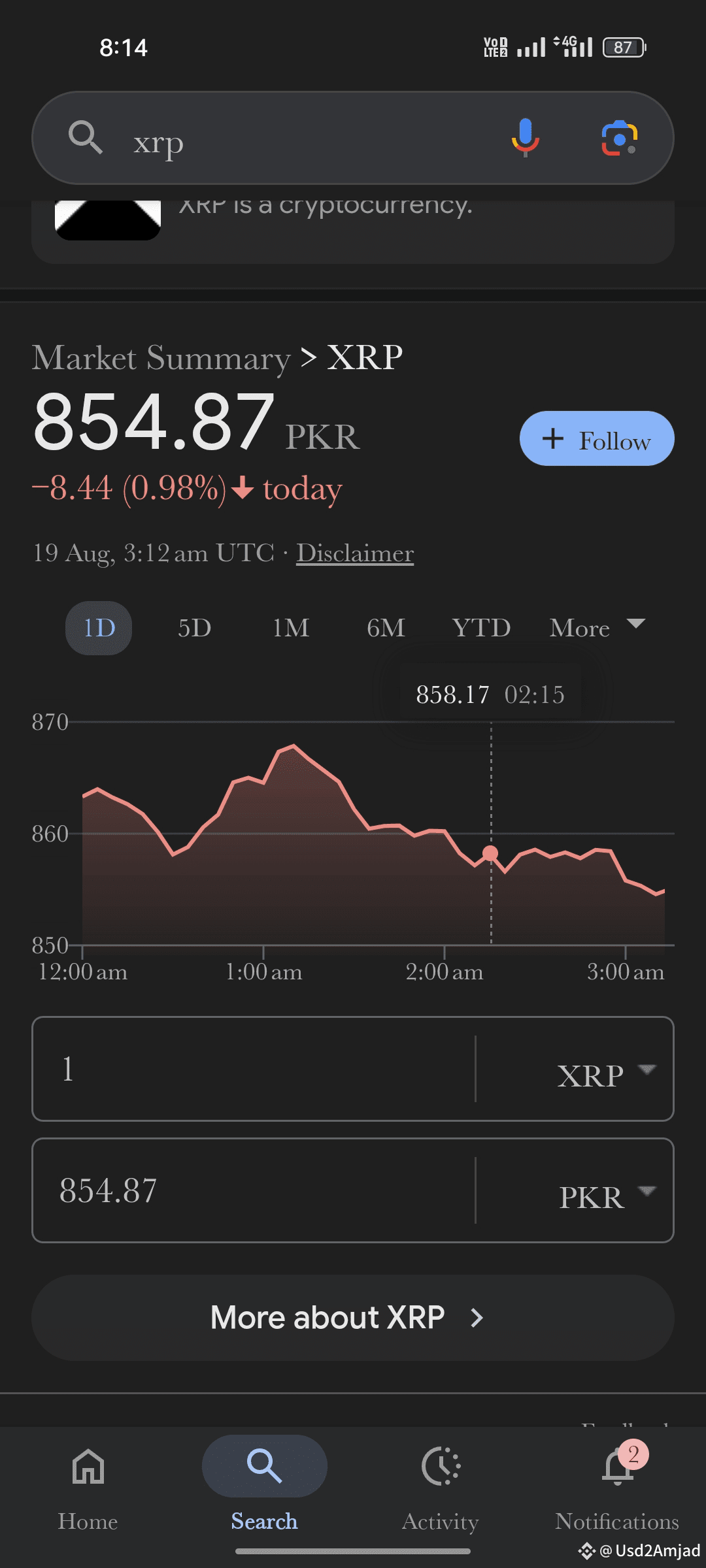The #xrp  Anomaly: A Digital Asset Built for the Bank, Not the Blockchain Rebel
Anomaly: A Digital Asset Built for the Bank, Not the Blockchain Rebel
In the crowded, often chaotic world of cryptocurrency, where a new project promises to be the next "Bitcoin killer" every other week, XRP stands as a curious anomaly. While many crypto projects are born from a spirit of decentralized rebellion and a desire to dismantle traditional financial systems, XRP was created with a clear and distinct purpose: to work with those very institutions. It's a digital asset that isn't trying to burn the house down; it's offering to rewire the plumbing.
This fundamental difference is what makes XRP's story unique and its technology particularly compelling. Unlike Bitcoin, which was designed as a peer-to-peer electronic cash system, or Ethereum, which is a platform for decentralized applications, XRP is a bridge currency. Its native home, the XRP Ledger (XRPL), is a decentralized, open-source blockchain specifically engineered for one of the most persistent and costly problems in global finance: cross-border payments.
A Consensus Built for Speed and Scale
The technical heart of XRP's uniqueness lies in its consensus mechanism. Instead of the energy-intensive "Proof of Work" (PoW) used by Bitcoin, or the capital-intensive "Proof of Stake" (PoS) adopted by others, the XRPL utilizes a unique Federated Consensus algorithm. This system relies on a list of trusted validators, known as a Unique Node List (UNL), to agree on the order and validity of transactions.
The result is a network that is both incredibly fast and energy-efficient. While a Bitcoin transaction can take 10 minutes or more to confirm, and an Ethereum transaction can cost a significant fee, an XRP transaction settles in 3-5 seconds and costs a fraction of a penny. This speed and low cost are not just minor improvements; they are transformative for use cases like international remittances and micropayments, where traditional financial rails are notoriously slow and expensive.
The Bridge, Not the Gold
XRP's primary use case is as a "bridge currency" within Ripple's On-Demand Liquidity (ODL) service. Traditional cross-border payments require banks to pre-fund nostro and vostro accounts in various currencies around the world—a process that ties up billions in capital. With ODL, a financial institution can instantly convert their local currency to XRP, send the XRP across the XRPL to another country, and have it instantly converted into the destination currency. The entire process takes seconds and eliminates the need for pre-funded accounts, freeing up capital and drastically reducing costs.
This isn't about replacing fiat currencies, but about making the existing financial system more efficient. While this has often put XRP at odds with the purist ethos of the broader crypto community, it has also garnered the attention of real-world financial players. Companies and institutions that require speed, reliability, and low cost for high-volume transactions see the value proposition of XRP in a way that is distinctly different from the speculative narratives surrounding other digital assets.
The Ripple Effect and a Look to the Future
The company behind the development of the XRPL, Ripple Labs, has been a key driver of XRP's adoption. By partnering with financial institutions and payment providers globally, Ripple has worked to build a network of users who leverage XRP for its utility. This has created a unique dynamic for XRP's market performance, which is often tied to institutional interest and regulatory developments, rather than the more speculative hype cycles that characterize other crypto assets.
Looking ahead, the XRP Ledger is evolving beyond just a payment rail. Its capabilities are expanding to support a variety of use cases, including tokenization, stablecoins, and even Central Bank Digital Currencies (CBDCs). This diversification of utility could further cement XRP's position as a foundational layer for the future of finance, a silent partner to the very systems it was built to optimize.
In a world of digital gold and decentralized casinos, XRP is a digital tool—a high-performance, purpose-built asset that has carved out a unique space by choosing collaboration over confrontation. Its story is a reminder that the future of digital assets may not be about completely dismantling the old, but about building a better, faster, and more efficient path forward.
